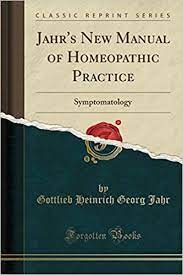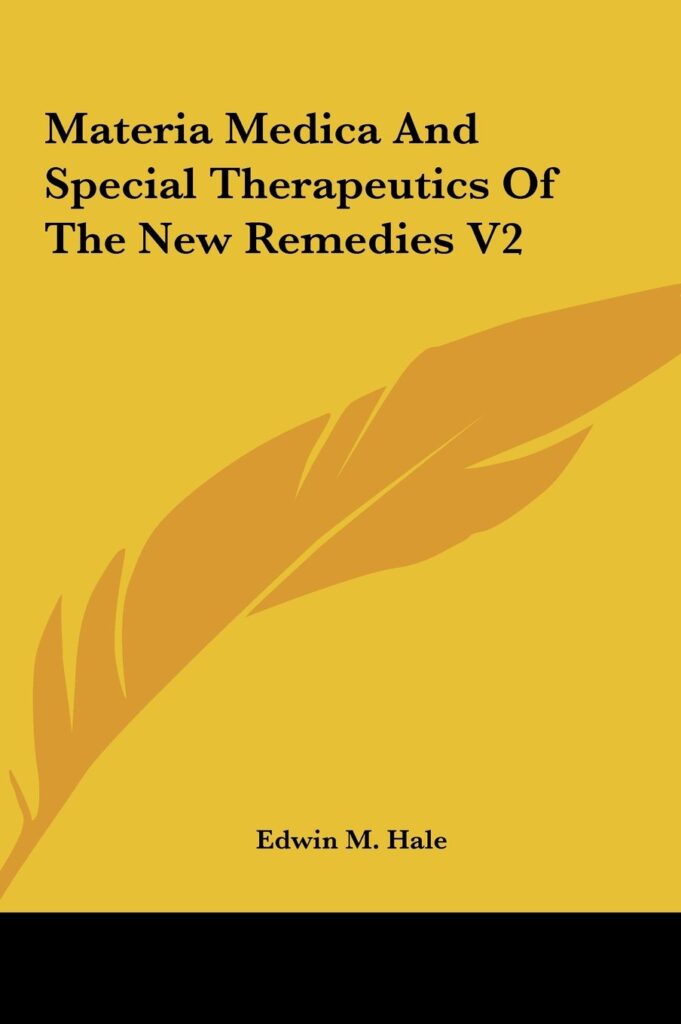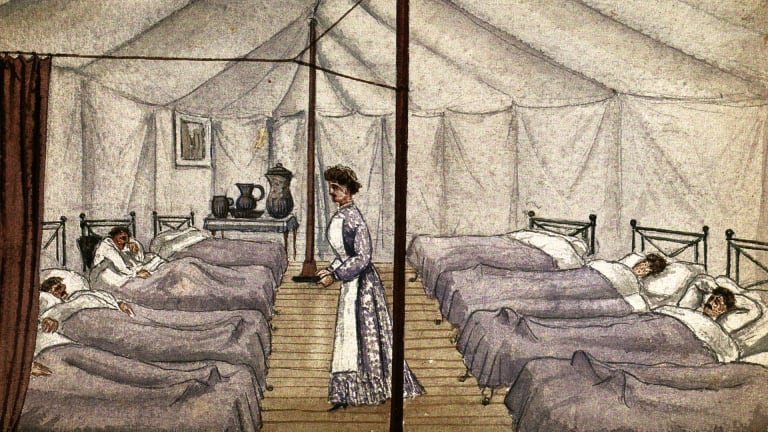The Problem with Smallpox by David Rosner
The eradication of smallpox has been hailed as among the greatest triumphs in public health history. Once a disease that swept through cities and towns, leaving in its wake untold number of casualties and disfigured peoples, it has disappeared from the natural environment through massive inoculation and public health campaigns worldwide. And since the last case of smallpox appeared in the 1970s, it can be truly said that it is the only diseases to have been “eradicated” through human intervention.
Yet the Cold War allowed us to grab defeat from the jaws of victory by seeing in smallpox a chance to create a new and “better” weapon of mass destruction. The United States and the Soviet Union managed to agree to make sure that the virus that causes smallpox would remain in storage awaiting a new opportunity to terrorize the world. For decades, both countries stored it, distributed it to various research labs and otherwise ensured that this public health victory would be turned into a potential human tragedy. Not only did the two countries refuse to destroy the remaining vials of smallpox virus, but they worked hard to figure out means of making it all the more deadly and immune to the very public health measures that had “eradicated” it in the first place. They both envisioned a new biological weapon against which the enemy would be completely unprotected! By genetically altering the virus and selecting out strains that will not be intimidated by the smallpox vaccines used in the earlier vaccination campaigns, the two countries have effectively created a world in which we can all worry.
The Current Risk of a Smallpox Outbreak in Modern Times
On November 4, 2021 Bill Gates has warn that governments must prepare for future pandemics and smallpox terror attacks by investing billions in research and development.
Mr Gates suggested that the “germ-games” could include preparing for acts of bioterrorism such as smallpox attacks on airports. “You say, OK, what if a bioterrorist brought smallpox to 10 airports? You know, how would the world respond to that? There’s naturally-caused epidemics and bioterrorism-caused epidemics that could even be way worse than what we experienced today”, he said.
On November 16, 2021 several vials labeled “smallpox” were found at a vaccine research facility in Pennsylvania, said the US Centers for Disease Control and Prevention. The frozen vials labeled ‘Smallpox’ were incidentally discovered by a laboratory worker while cleaning out a freezer in a facility that conducts vaccine research in Pennsylvania. Laboratory testing at the Centers for Disease Control and Prevention (CDC) on November 18, 2021 showed that these vials marked as “smallpox” contained vaccinia, the virus used in smallpox vaccine. There was no evidence that the vials contain variola virus, the cause of smallpox.
In 2014, employees of the National Institutes of Health found six vials of smallpox in an unused storage room as they packed up a lab at the NIH’s Bethesda, Maryland, campus to move it. Two of the vials contained viable virus. The CDC said at the time there was no evidence anyone had been exposed to the contents of any of the vials.

Smallpox Varieties, Mode of Propagation, Symptoms, Diagnosis and Dangers by Dr. Ruddock (1878)
VARIETIES.- This, the most marked of the eruptive fevers, and one of the most malignant, loathsome, and contagious disease, is of two varieties : (1) the distinct, when the pustules are separate and well defined (2) the confluent, when they are thick-set, run into each other, and form continuous suppurating surfaces. In this latter variety all the symptoms are aggravated, the glands are affected, the limbs swell, the mucous membranes show the eruption, and there is danger of suffocation from involvement of the larynx. This variety is, therefore, very dangerous, for the severity bears a direct proportion to the extent and suppuration of the pustules.
MODE OF PROPAGATION.- By contagion. No contagion is so strong, so sure, or operates at so great a distance of time and place. It is probably most infectious when the characteristic odour is perceived, and when the pustules suppurate. Recurrence of the disease is rare.
SYMPTOMS.- At first these are similar to those of most other fevers. There is lassitude, chilliness, heat, headache, a thickly-furred white tongue, a deep flush upon the face, a feeling of bruised pain all over the body, but especially in the back and loins, more or less pain or tenderness at the pit of the stomach, and sometimes vomiting. On the second and third day there may be transitory rashes of scarlatinal or measly type. these sometimes lead to errors of diagnosis, but their usual distribution, confined to lower abdomen, sides of thorax, axillae, and inner sides of thighs, should prevent mistakes. On about the third day the eruption appears in the form of red spots, or small hard pimples, feeling like shot in the skin. It first comes out on the forehead and front of the wrists;then on the neck and breast; then gradually extends over the body.
The eruption being completed, the fever subsides; the pimples begin to fill with fluid matter; this is first watery and transparent (vesicles), then yellowish (pustules); then become depressed in the centre (“umbilicated”), and are surrounded by a circular inflamed ring. The eyelids, face, and hands are swollen, and the features sometimes obliterated. A peculiarly disagreeable odour smell, cannot be forgotten. In about eight or nine days from the first appearance of the eruption, the pustules discharge their contents; secondary fever sets in; scabs then form, which dry up, and, in a strong constitution, fall off in the course of four or five days. There remain purplish spots, which do not fade away before the sixth or eight week, or indelible depressed scars, which are called pits or pocks. Discrete variola rarely leaves pocks; confluent variola always does.
DIAGNOSIS.- Unlike Measles and Scarlet fever, the pimples give the sensation to the finger of small shots embedded in the skin; the catarrhal symptoms of Measles, and the sore throat of Scarlet fever, are absent. Unlike Chicken-pox, the eruption suppurates and the fever is high. Unlike Enteric fever, the onset is abrupt.
DANGERS.- The more numerous and confluent the pustules, the greater the danger; the more perfect their maturity on the fourth day, the less the danger. The greatest danger arises from the secondary fever, about the ninth to the twelfth day, while the pustules are ripening; for then the fever is likely to return, when the vital strength is already much exhausted. In a confluent case, fatal chest symptoms may arise, or abscesses may form in various parts of the body, or there may be ulceration and opacity of the cornea or and loss of sight. Suppressed perspiration, scanty urine, Haematuria, great hoarseness, Convulsions, Delirium, or other complications increase the danger of fatality. Half the deaths occur between the seventh and eleventh days of the eruption. Smallpox is very fatal to young children. Small, dark, and badly ventilated dwellings, poor or scanty food, and want of cleanliness, constitute unfavourable conditions.

Homeopathic Prophylaxis for Smallpox
The homeopathic nosodes Variolinum, made from a smallpox pustule, and Malandrinum, derived from “grease” or “farcy,” a similar disease of horses, have both proved highly protective against smallpox epidemics in the past. For example, Fellger reported giving Variolinum to several hundred people, none of whom were ever attacked with smallpox. The collective experience of generations of homeopaths in the pre-vaccine era provides ample documentation that smallpox can be effectively prevented or mitigated if either of these remedies is given at the time of exposure or early in the 7-17 day incubation period.

Disease Onset: At the First Sign of Symptoms
G. H. G. Jahr, an experienced homeopath who treated a great many cases around the mid 1800’s, prescribed Variolinum at the onset of the disease, and found that its course is generally abbreviated by it more effectively than by any other agent, with the added benefit that complications do not occur or soon disappear with continued use of this drug.
At the first sign of symptoms, we recommend Variolinum 30C, followed an hour later by 200, and by 1M one hour after that. Thereafter the symptom picture must be allowed to develop to provide more definite indications.
Homeopathic Treatment for Uncomplicated Cases, by Dr. Ruddock
Ant.Tart. is considered to be the most suitable medicine, and a dose should be given every two or three hours. It may be preceded by a few doses of Aconite at similar intervals, and the two medicines may be administered alternately, if the violence of the fever demand the continuance of the Aconite. Uncomplicated cases will in all probability yield to this treatment.
Common Homeopathic Remedies for Smallpox
Antimonium tartaricum is one of the most frequently recommended remedies, endorsed by Hughes, Tyler, Mathur, and Farrington. May be given as soon as smallpox is suspected, or at any stage, either alone or in alternation with any other remedy. Where the eruption has not come out properly or been suppressed by conventional treatment. Ant tart is a nearer simillimum to smallpox than any other remedy in the Materia Medica. It exercises a real abortive control over the variolous process and frequently covers the case from first to last.
Arsenicum album is another of our commonest remedies, recommended by many authorities. Especially in asthenic cases, with great prostration and sinking of strength.
China for hemorrhagic purple or black pustules, with great exhaustion from copious, painful stools, excessive debility, and prostration after severe attack. One of the main remedies when diarrhea is a chief characteristic.
Crotalus horridus is a leading remedy for septic cases. Bleeding tendency when rash fails to appear, with passive hemorrhage from many orifices, dry tongue coated yellow or dark-brown with red edges and tip, and low, muttering delirium with drowsiness.
Hydrastis is one of the most frequently recommended remedies. Dark pustules, which are intensely itchy, swollen, and tingling. Prevents pitting. Dr.Garth Wilkinson considered Hydrastis as much of a specific in variola as Belladonna is in scarlet fever.
Lachesis is highly recommended in the suppurative stage, especially for sepsis or collapse, with hemorrhaging of dark blood.
Malandrinum is an important remedy both in treatment and for preventing disfiguring scars. For confluent or complicated cases, i. e., where the skin has an unnatural color between pustules, and the smallpox lesions become confluent, which is always serious; or when the eyeball becomes congested and red, which is a danger signal, Fellger used Malandrinum with notable success.
Phosphorus is one of the most important remedies, even for confluent cases. Hemorrhagic diathesis, with bloody pustules; prevents pitting.
Rhus tox is a major remedy. Typhoid-like symptoms, with dry tongue, sordes on lips and teeth, and great restlessness: wants to get out of bed, in spite of great debility. Pustules black or with bloody pus, and extremely itchy. Rheumatic symptoms, with aching in neck, back, and down legs, great tightness of muscles, and thirst for small sips.
Sarracenia purpurea has few reliable indications, but many homeopaths report great success in severe cases. Often used as specific, as well as prophylactically (for more details about this remedy, see below).
Silica is a leading remedy for severe, chronic cases. Caries of bone following severe attacks, with fistulous openings and discharge of thin pus and bony fragments, and for other chronic sequelae of smallpox or vaccination, such as weakness or corneal opacity.
Sulphur is indicated when ophthalmia complicates the picture. Also indispensable as an intercurrent, where seemingly well-indicated remedies fail.
Thuja. Boenninghausen employed this remedy with success and believed it to be the best curative and preventive agent in smallpox.
Variolinum. Widely used for prophylaxis. If given steadily throughout, the disease runs a milder course, imperfect pustules become more regular, and quickly dry up. Promotes suppuration and desiccation, and prevents pitting. When Fellger’s patients were treated with Variolinum 200C, he reported that the disease was shortened nearly by half, suffering was much mitigated, secondary fever was absent or much lighter, pustules did not burst but wither or wilt and fall off, the stage of suppuration was hastened and shortened, and patients were not marked with permanent scarring.
For a more detailed and comprehensive list of remedies for smallpox, please refer to Bioterrorism and Homeopathy by Dr. Moskowitz as well as Homeopathy for Smallpox Like Eruptions by Dr. Manisha Bhatia

Sarracenea Purpura (Sarr) by Dr. Hale (1875)
This curious plant was first used as a medicine by the Indians, who, according to the reports of certain British officers, cured nearly every case of small – pox, in an epidemic of that disease which raged in Nova Scotia. So glowing were the accounts of its success in that dreadful disease, that it was used extensively in English and American hospitals, for a time, with the most varying success. It is difficult to account for the conflicting reports relative to its value in that malady, some pronouncing it absolutely inert, others asserting it to be a specific. In the first edition of New Remedies, I published only allopathic testimony. In the second edition, appeared a large amount of homoeopathic testimony from English, Continental and American physicians, nearly all of whom reported favorable of the value of the Sarracenia in the treatment of variola.
This remedy was believed by the Indians to be so efficacious, that if given to them when attacked with small – pox, they looked forward with confidence to a speedy and effectual cure. An old weired Indian woman was the fortunate possessor of the remedy in question. She had always been known as doctress of her tribe, and had enjoyed celebrity for many years, in consequence of her reputed knowledge of medicine, and wonderful acquaintance with the herbs and roots of the woods. So well established was her fame among the Indians, that when sick, they resorted to her in preference to the white doctors, whom they considered to be “no good. “
(1.) In the case of an individual suspected to be under the influence of small – pox, but with no distinct eruption upon him, a wine – glassful of an infusion of the plant, “Sarracenia purpurea,” or pitcher – plant is to be taken. The effect of this dose is to bring out the eruption. After a second and third dose, given at intervals of from four to six hours, the pustules subside, apparently losing their vitality. The patient feels better at the end of each dose, and in the end of each dose, and in the graphic expression of the “Mec – Mac,” “knows there is a change within him at once. “
(2.) In a subject already covered with the eruption of small – pox in the early stage, a dose or two will dissipate the pustules, and subdue the febrile symptoms. The urine from being scanty and high – colored becomes pale and abundant, whilst from the first dose the feelings of the patient assure him that “the medicine is killing the disease.” Under the influence of the remedy, in three or four days the prominent symptoms of the constitutional disturbance subside, although, as a precautionary measure, the sick person is kept in camp until the ninth day. No marks of the eruption (as regards pitting, etc.) have been left in cases examined, if treated by the remedy.
With regard to the medicine acting (as is believed by the Indians) in the way of a preventive, in those exposed to infection, it is curious to note, that in the camps where the remedy has been used, the people keep a weak infusion of the plant prepared, and take a dose occasionally during the day, so as to “keep the antidote in the blood. “
During the epidemic of variola, which prevailed for so long a time at Barcelona, and which still exists in some of the neighboring districts, I had occasion to try the Sarracenia purpurea, homoeopathically prepared. This remedy, which I have used in low dilution, has invariably given me the finest results.
The dilutions from the 1st decimal to the 3rd centesimal have been those in which Sarracenia has been used (Hughes, 1893).
Commonsense Measures for Home Care of Patients
For home care of patients with smallpox, 19th-century homeopaths recommended the following treatments. While some of them sound archaic today, their vast pooled experience has inestimable value alongside our purely theoretical knowledge at present, when no living colleague has ever treated a case of smallpox.
General Hygiene
Patients should be cared for in a room with moderate light, preferably separate from everyone else, which can be ventilated to provide ample fresh air continuously. Curtains, carpets, and all unnecessary furniture should be removed, and carbolic acid [phenol] should be used liberally as disinfectant. Tepid sponge baths relieve heat and restlessness, quiet delirium, lower the pulse, and promote sleep. Wet cloths applied to the throat, fastened at back of neck and top of head to protect the submandibular glands, seldom fail to comfort. Steam inhalation is useful when the throat is sore. When recovering, warm clothing such as flannel is necessary, and afterward a change of air is advisable, to the seaside if possible. The patient must not go out too early, lest secondary symptoms recur.
Diet
During the fever, milk and soda water, gruel, dry toast, simple biscuits, egg yolks beaten with cold milk, grapes, oranges, cooked fruit, etc., should be the staple diet. Drink may consist of cold water, barley water, weak lemonade, and the like, in small quantities as often as desired. As fever abates, a milk-based diet may be given, gradually returning to solid food. Strong drinks are rarely necessary, except in malignant cases, where wine, brandy, extract of beef, beef tea, etc., may be administered in frequent small doses under medical supervision. The patient’s position in bed should be changed frequently to avoid bedsores. In 1873 the Austrian Government named Dr. Roth to treat an outbreak of smallpox, for which he gave everyone exposed two tablespoons of vinegar per day, apparently with excellent results.
Local Treatment
When the eruption appears in force, the whole surface should be smeared with olive oil, cream, cold cream, or glycerin and water 1:2, 2 or 3 times daily. As pimples ripen into pustules, but before they break open, the skin may be sponged with equal parts of glycerin and rose water, and dusted with a powder of Ant. tart. 1X and violet powder 1:8. The glycerin and rose water helps the powder to adhere, which minimizes pitting. The hands of children should be muffled to keep them from scratching, which easily leads to ulceration and scarring. In children of both sexes, special attention should be directed to the urinary organs, which are vulnerable to serious complications. Vigilance is needed to minimize local irritation. When the skin becomes overheated or hypersensitive, great relief may be obtained by sponging with warm water and a few drops of phenol and then drying with a soft towel. Once pustules burst open, powdered starch or corn flour should be applied to absorb the matter. Cleanliness and frequent washing with tepid water are important, especially during the later stages. Eyelids glued together should be sponged regularly with warm water.
References
A Manual of Pharmacodynamics By Richard Hughes, LRCP, Ed., 6th edition.
Bill Gates warns of smallpox terror attacks and urges leaders to use ‘germ games’ to prepare
CDC Testing Shows Commercial Lab Vials Contain No Trace of Virus Known to Cause Smallpox
Homeopathy for Smallpox like Eruptions Treatment by Dr. Manisha Bhatia
Materia Medica and Special Therapeutics of the New Remedies V2 by Dr. Edwin Moses Hale
The Diseases of Infants and Children by Dr. Ruddock
Vials labeled ‘smallpox’ found at vaccine research facility in Pennsylvania, CDC says
Disclaimer: Homeoprophylactic remedies should only be administered under the guidance of a classical homeopath. Should the need arise, the homeopathic treatment of smallpox should only be attempted under the direction of a classical homeopath.


One thought on “Homeopathy for Smallpox”